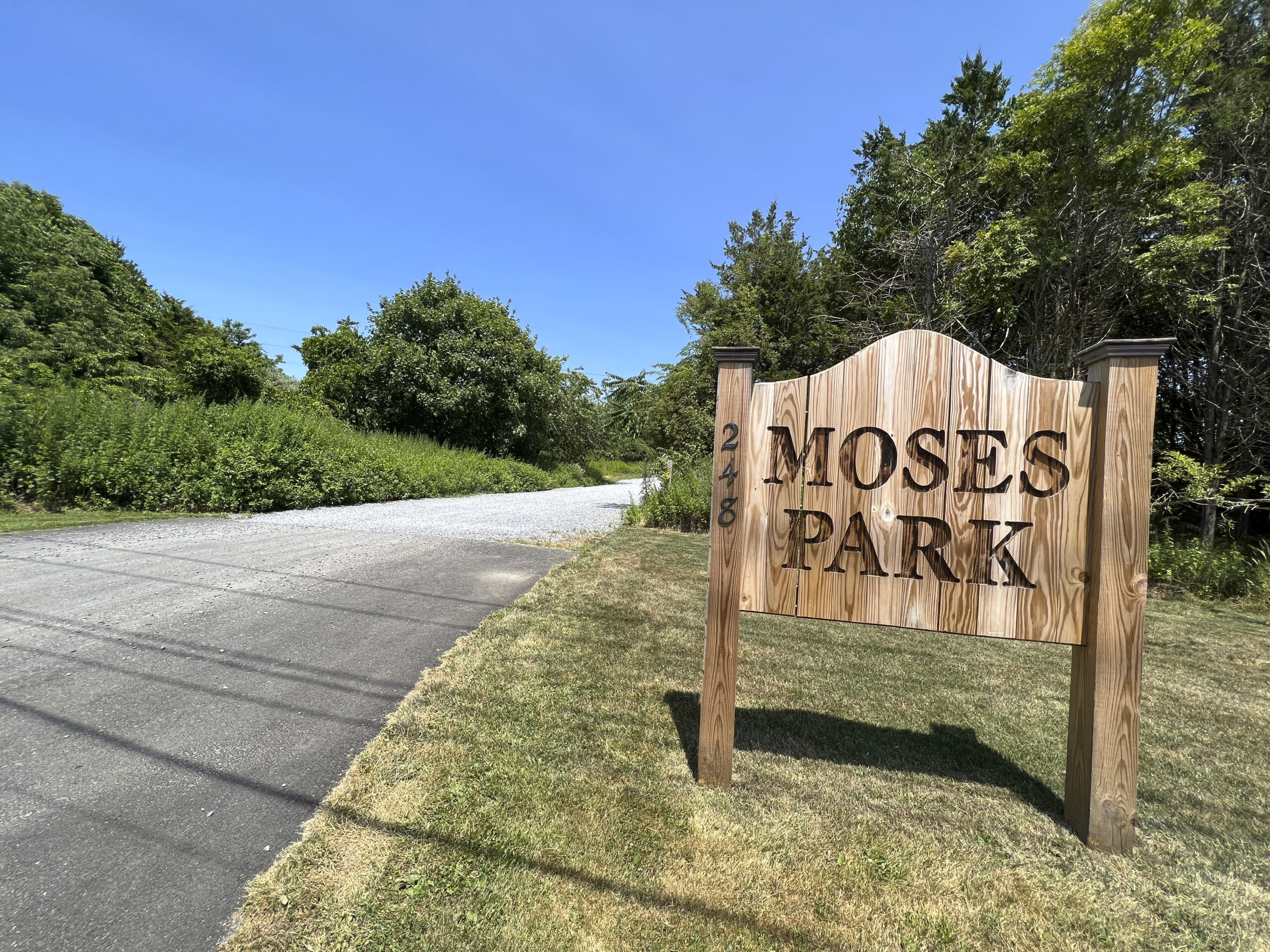
In 2016, at the request of Southampton Village officials, Southampton Town agreed to use $14 million from the Community Preservation Fund to buy the 12-plus acres of open space on the western end of Southampton Village known as Moses Park.
It did so contingent on a promise from the village that it would be developed as an “active” park — complete with not only a walking trail and some open green space but also a bathroom comfort station, bocce ball courts and pickleball courts, available for use by both village and town residents.
When Southampton Village Mayor Jesse Warren took office in 2019, he discovered that tentative plans for developing the park had been drawn up, but the prior administration had never appropriated the funds, leaving their promise to the town unfulfilled.
With the help of Deputy Mayor Gina Arresta, the liaison to the Public Works Department, Warren had the park opened up in 2021 — and now the administration is moving forward with updated plans to make good on its initial promise to the town to develop the recreational components.
When it is complete, Moses Park will be what Warren and Southampton Town Supervisor Jay Schneiderman both describe as something of a happy medium between a truly “active” recreational park and a truly “passive” one, and they both feel confident that it will appeal to many residents with little to no disruption to nearby homeowners.
While some residents have expressed a desire to see the park remain a truly passive space, without bocce and tennis courts, Schneiderman said that is unlikely to happen.
He pointed out that the expenditure of the $14 million in CPF funding was based on the commitment by the village to turn Moses into an active park, and getting out of that commitment would cost the village a big chunk of change.
“If the village pays the town back the money, they can do whatever they want with it,” Schneiderman said, adding that the village could even pay back just $10 million of that funding if it desired. “But I don’t think the village will do that. I think the better idea is to try and understand any concerns there might be and see if those can be mitigated.”
That’s precisely what Warren and the rest of the village administration are planning on doing. Warren said that it was made clear, in numerous conversations with Schneiderman regarding the park in recent months, that the town expects the village to fulfill the commitment it made, and said he’s confident they can do that in a way that satisfies the needs of residents who will use the park, and address any concerns neighbors might have.
“We just wanted to get the doors open there,” Warren said of the effort made last year, spearheaded by Arresta, to open the park. “It’s a nice park, and seniors like to hang out there. Now we’d like to come up with a situation where we can create additional improvements.”
Warren said they’re currently working on reengaging Aerys Design, which did the initial plans, to come up with an updated plan and concept, which he said can be amended with input from residents.
“We have some good ideas for what we can add,” Warren said. “It could be a really good addition to the village, and with community input, we can make the park even nicer.”
He said updated plans would not only include the addition of the bocce and pickleball courts, but plenty of the more traditional passive park elements people enjoy, with the walking trail and green space, perhaps even a planned meadow or garden area.
Schneiderman expressed similar thoughts as Warren on how the park could benefit the community with minimal negative impacts.
“It’s going to be a really lovely senior park,” he said, pointing out that it will likely mostly be used by residents within walking distance, and will be much less “active” than parks that include playgrounds for children, playing fields for soccer or other sports, or a skate park. “It will be very low key, and an asset to the neighborhood.”
Schneiderman also pointed out that before the town purchased the property, it was looked at for other potential uses. The original owner had considered building an apartment complex there, and it was also slotted as the possible site of a 16-home affordable housing development. It had also at one point been considered a possibility for a sewer treatment plant, before the CPF purchase paved the way for what it has become and the plans to improve and enhance it.
“I think once it’s built, people will be happy,” Schneiderman said. “It will be a really nice thing for the community.”